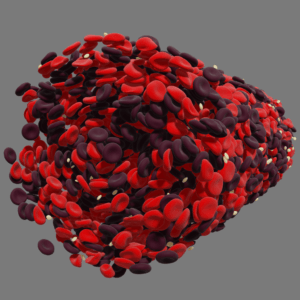Blood is the single most important fluid in the human body. It has an important role in most healthy and pathologic processes. Yet many of its properties are poorly understood primarily due to its complex cellular nature. It is composed of a dense suspension of deformable cells and various proteins suspended in blood plasma.

To reduce complexity, blood is usually simulated as continuum fluid with empirical rheology curves. However, in recent years our understanding in connected physiologic processes and diseases has increased significantly. It has reached the point where more detailed description of blood is necessary to interface it with biological and biochemical processes. Good examples are demonstrated by the Virtual Physiological Human short movie on YouTube ( https://youtu.be/1FvRSJ9W734 ) – look for anything blood related to see HemoCell in action. The dynamics, collision, and deformation of every red blood cell is resolved every microsecond by approximately 5000 equations.
I will introduce the computational challenges and solutions that allow an efficient simulation of these intricate details of blood and demonstrate how this solution can scale over a quarter million CPU cores. Finally, I will show a set of examples on how these novel large-scale simulations contribute to clinical and in vitro experimental research, leading to better understanding of the respective investigated pathologies.






